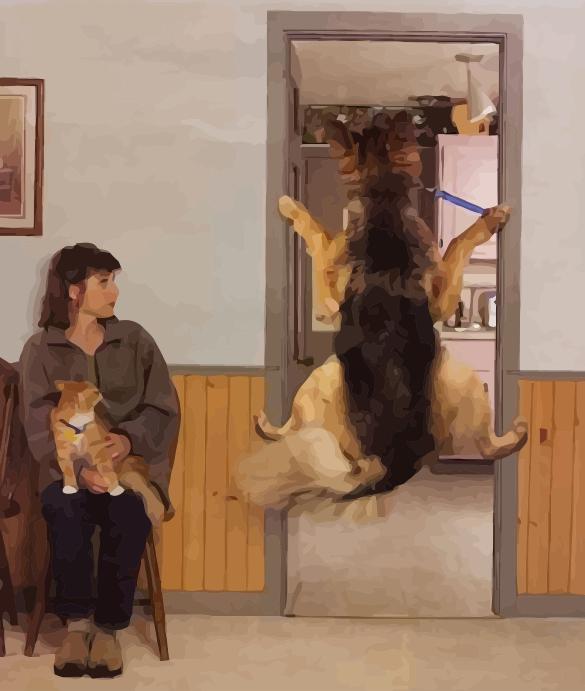Getting the Most from Your Vet (for Your Dog)
 Your dog may disagree, but vet visits are important!
Your dog may disagree, but vet visits are important!Your vet will play an essential role in the care of your dog from puppyhood to old age, and you should choose one as carefully as you would your own doctor. The recommendations of friends, neighbors, and fellow dog-walkers are always an excellent way to begin. If you have recently moved into a new neighborhood, your previous vet may be able to make suggestions.
The veterinary hospital should not be too far away: an hour-long drive with a sick dog is not desirable. The level of the facilities offered will vary, depending on the size of the practice, and will be a factor in the fees. Large hospitals provide a wider range of specialist services such as surgery, ophthalmology, cardiology, radiology, dentistry, dermatology, and behavior therapy. Visit the facility and ask to have a look around. You may have more contact with the support staff than with the vet(s), so ensure that they are equally friendly and helpful, both to you and your dog. Ultimately, the most important thing is that you feel the vet is taking good care of your animal. It is important that both you and your dog like and trust the vet.
Don't Wait for a Crisis
Make an appointment for a routine checkup without waiting for your pet to fall sick — it is best for the vet and the dog (especially a young puppy) if the first examination takes place without the pressure of an emergency. The vet will examine and weigh your dog, and take notes for future reference. Most veterinary centers today have computerized record keeping. At the first visit the vet will take the opportunity to discuss deworming and vaccination programs with you. Many proprietary drugs for flea control and deworming, as well as prescription medicines, can be dispensed only if your dog is under the direct care of a veterinarian. This is for the animal's own benefit.
If you have to make an emergency appointment, explain to the receptionist, the nurse, or veterinarian on duty exactly what the problem is. You will be given immediate advice for dealing with the emergency and advised whether or not the dog needs to be seen right away. If it is outside normal working hours, you may be asked to go to a different location — check before you leave home.
It is always better to take your dog to the vet than have the vet come to you, as the facilities for diagnostic tests or emergency surgery are not portable. However, it may be necessary to arrange a home visit if the dog cannot be moved or if there are several animals to be treated. Try to avoid night and weekend calls unless it is absolutely necessary.
You will normally have to wait to see the vet. This can upset even a calm dog, so have a muzzle handy. If the receptionist has warned you to bring along a urine or feces sample, make sure it is in a clean, sealed container. Your vet will be able to give you a special collection kit for the purpose, though any clean food container will do. After the visit, make sure that you understand any instructions for giving medication and that you know if a follow-up visit is needed.
Q&A
How often should I take my dog for a checkup?
For healthy adult dogs, an annual visit for booster shots is a reasonable interval. Puppies, old, and chronically sick dogs should be seen more often. Regular checkups make it easier to spot the early onset of some diseases. Small changes that you have not noticed can be obvious to the vet. It also means that your vet gets to know you and the dog.
Why does my vet want to see my dog a second time for her ear infection, when he has already prescribed medication to clear it up?
Dogs cannot tell you if they are still experiencing pain, so vets nearly always arrange a return visit to make sure the condition has disappeared. If any infection is left, the problem will almost certainly recur within a few weeks. It is better to be sure—a prolonged ear infection may require surgery to repair the damage.
My dog has to have a simple operation requiring a general anesthetic. What is involved?
Anesthesia is very safe these days. You will probably be asked to bring the dog to the animal hospital first thing in the morning, having withheld food overnight. The dog will be sedated prior to receiving the anesthetic drugs, which are normally injected into a vein in the foreleg. The dog is unconscious in seconds, and a breathing tube is put down the windpipe and connected to an anesthetic machine. The dog's breathing and heart rate are monitored throughout the operation. Afterward, it is taken to a recovery ward and kept warm and comfortable. Recovery rates vary, but most dogs are allowed home the same day.



Leave a Reply